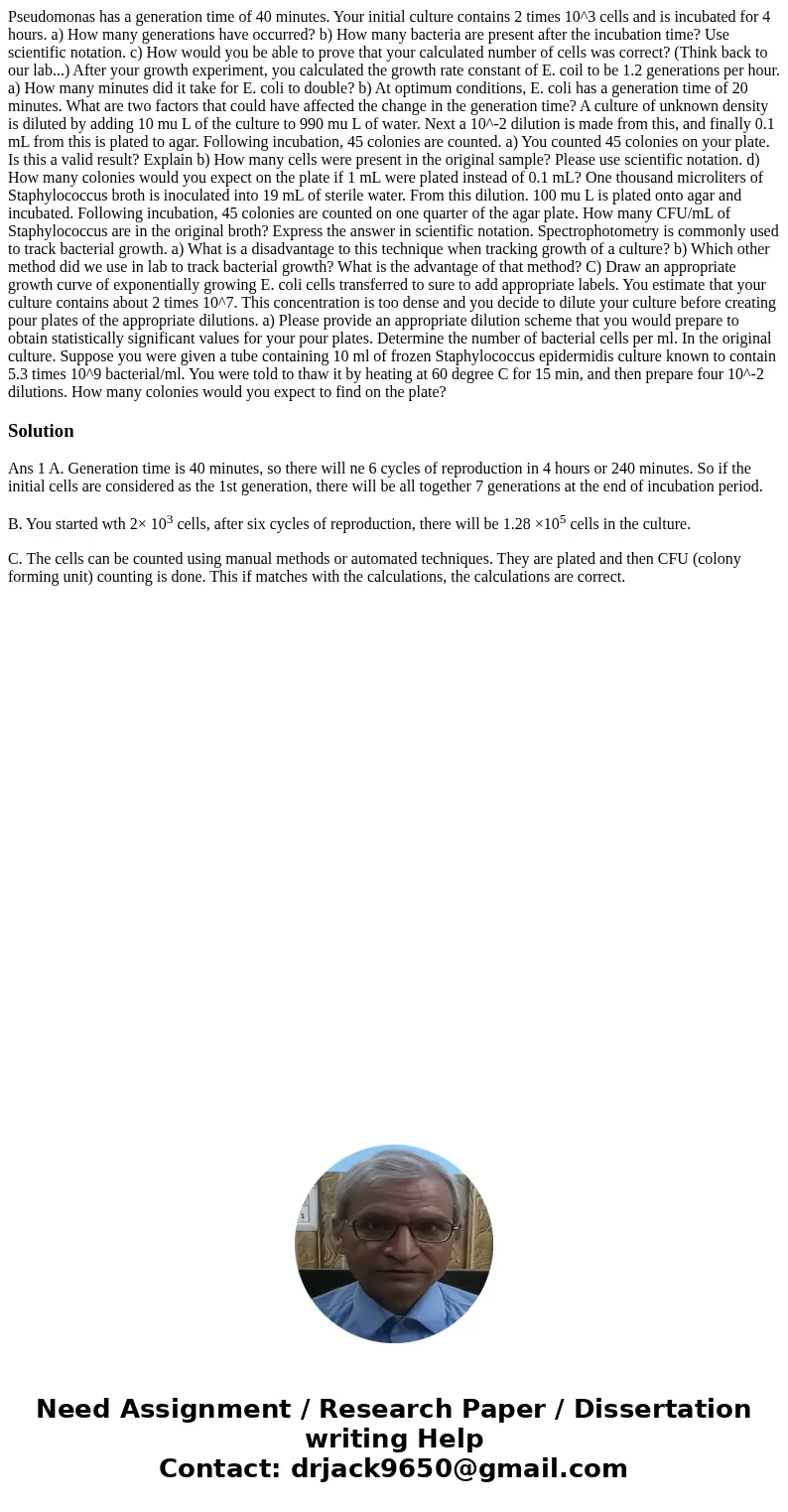Pseudomonas has a generation time of 40 minutes Your initial
Pseudomonas has a generation time of 40 minutes. Your initial culture contains 2 times 10^3 cells and is incubated for 4 hours. a) How many generations have occurred? b) How many bacteria are present after the incubation time? Use scientific notation. c) How would you be able to prove that your calculated number of cells was correct? (Think back to our lab...) After your growth experiment, you calculated the growth rate constant of E. coil to be 1.2 generations per hour. a) How many minutes did it take for E. coli to double? b) At optimum conditions, E. coli has a generation time of 20 minutes. What are two factors that could have affected the change in the generation time? A culture of unknown density is diluted by adding 10 mu L of the culture to 990 mu L of water. Next a 10^-2 dilution is made from this, and finally 0.1 mL from this is plated to agar. Following incubation, 45 colonies are counted. a) You counted 45 colonies on your plate. Is this a valid result? Explain b) How many cells were present in the original sample? Please use scientific notation. d) How many colonies would you expect on the plate if 1 mL were plated instead of 0.1 mL? One thousand microliters of Staphylococcus broth is inoculated into 19 mL of sterile water. From this dilution. 100 mu L is plated onto agar and incubated. Following incubation, 45 colonies are counted on one quarter of the agar plate. How many CFU/mL of Staphylococcus are in the original broth? Express the answer in scientific notation. Spectrophotometry is commonly used to track bacterial growth. a) What is a disadvantage to this technique when tracking growth of a culture? b) Which other method did we use in lab to track bacterial growth? What is the advantage of that method? C) Draw an appropriate growth curve of exponentially growing E. coli cells transferred to sure to add appropriate labels. You estimate that your culture contains about 2 times 10^7. This concentration is too dense and you decide to dilute your culture before creating pour plates of the appropriate dilutions. a) Please provide an appropriate dilution scheme that you would prepare to obtain statistically significant values for your pour plates. Determine the number of bacterial cells per ml. In the original culture. Suppose you were given a tube containing 10 ml of frozen Staphylococcus epidermidis culture known to contain 5.3 times 10^9 bacterial/ml. You were told to thaw it by heating at 60 degree C for 15 min, and then prepare four 10^-2 dilutions. How many colonies would you expect to find on the plate?
Solution
Ans 1 A. Generation time is 40 minutes, so there will ne 6 cycles of reproduction in 4 hours or 240 minutes. So if the initial cells are considered as the 1st generation, there will be all together 7 generations at the end of incubation period.
B. You started wth 2× 103 cells, after six cycles of reproduction, there will be 1.28 ×105 cells in the culture.
C. The cells can be counted using manual methods or automated techniques. They are plated and then CFU (colony forming unit) counting is done. This if matches with the calculations, the calculations are correct.

 Homework Sourse
Homework Sourse